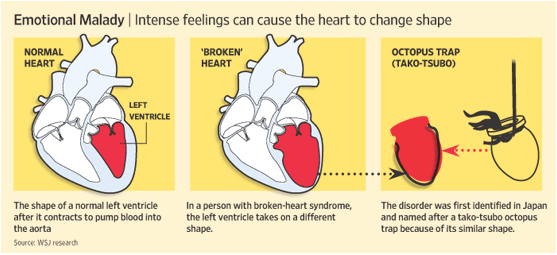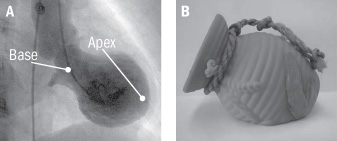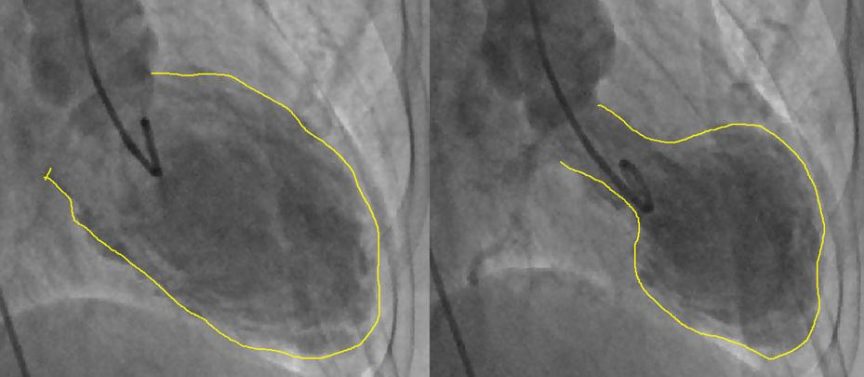A Broken Heart Syndrome (also called stress-induced cardiomyopathy, or Takotsubo cardiomyopathy) is a temporary heart condition brought on by acute very stressful situations.
Stress cardiomyopathy is a well-recognized cause of acute heart failure. The high levels of stress hormones (adrenaline, etc.) caused by heart-breaking scenarios (i.e. break-up, death, sickness) essentially restrict the heart’s ability to properly pump blood throughout the body.
In a broken heart syndrome, a part of the heart temporarily enlarges and doesn’t pump well, while the remainder of the heart functions normally or with even more forceful contractions. Because the shape of the heart resembles a “tako tsubo” (octopus pot in Japanese), it is also called a Takotsubo cardiomyopathy:


Patients with broken heart syndrome may have sudden chest pain that resembles a heart attack or arrhythmias, not caused by coronary artery disease but instead by a surge of stress hormones.
To confirm a diagnosis, a variety of tests will are needed to be done that may include blood tests, EKGs, chest X-rays and a cardiac ECHO, a cardiac catherization, or a CTA of the chest to exclude the possibility of a pulmonary embolism.
Treatment is similar to treatment for a heart attack until the diagnosis is clear. Most people with a Broken Heart Syndrome make a full recovery within weeks.
(Images from: Can Your Heart Literally Break? Katherine A. Boyle, 2/10/2012)
Reference:


Comments 2
Would/could a drastic case of Broken Heart Syndrome appear, mimic or be misdiagnosed b computer EKG as Wolff Parkinson White disorder?
Pingback: Broken Heart Syndrome - Cardiac Health